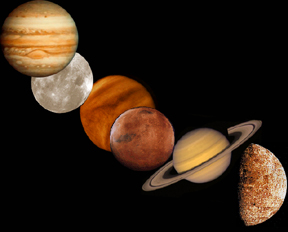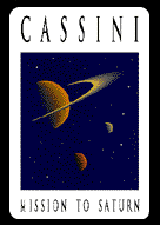The Cassini mission logo.
Click on image for full size
NASA/JPL
To Saturn We'll Go...
News story originally written on October 10, 1997
The Cassini mission has received a "GO" for launch. Cassini will be launched from Florida on October 13, 1997.
The Cassini probe will travel 7 years to reach Saturn. When it arrives it will study Saturn's moons and rings. The spacecraft carries 12 scientific experiments that will help scientists to understand Saturn's atmosphere and its magnetic field.
The Cassini spacecraft will also carry an atmospheric probe that will parachute into Titan's atmosphere. Titan is Saturn's largest moon. Its thick atmosphere is nitrogen-based like the Earth's. Scientists are hoping to make connections between the Earth and Titan.
The Cassini mission is a joint project of NASA, the European Space Agency, and the Italian Space Agency. The main mission will end in July 2008.
You might also be interested in:

It was another exciting and frustrating year for the space science program. It seemed that every step forward led to one backwards. Either way, NASA led the way to a great century of discovery. Unfortunately,
...more
The Space Shuttle Discovery lifted off from Kennedy Space Center on October 29th at 2:19 p.m. EST. The weather was great as Discovery took 8 1/2 minutes to reach orbit. This was the United States' 123rd
...more
A moon was discovered orbiting the asteroid, Eugenia. This is only the second time in history that a satellite has been seen circling an asteroid. A special mirror allowed scientists to find the moon
...more
Will Russia ever put the service module for the International Space Station in space? NASA officials want an answer from the Russian government. The necessary service module is currently waiting to be
...more
A coronal mass ejection (CME) happened on the Sun early last month. The material that was thrown out from this explosion passed the ACE spacecraft. The SWICS instrument on ACE has produced a new and very
...more
J.S. Maini of the Canadian Forest Service called forests the "heart and lungs of the world." This is because forests filter air and water pollution, absorb carbon dioxide, release oxygen, and maintain
...more
In late April through mid-May 2002, all five naked-eye planets are visible at the same time in the night sky! This is includes Mercury which is generally very hard to see. You won't want to miss this!
...more















